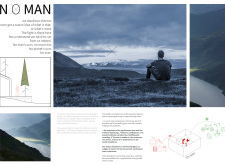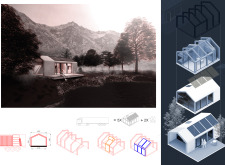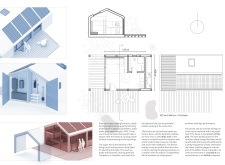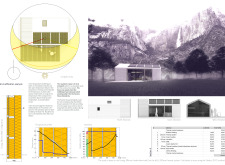5 key facts about this project
The NoMan initiative presents a compact design that redefines modern living for a young professional couple, rooted in ecological responsibility and sustainability. Covering an area of 25 square meters, the concept encourages a lifestyle that is closely tied to nature. It views human dwellings as borrowed spaces, promoting an approach to living that is both practical and mindful of the environment.
Spatial Efficiency
The design emphasizes the effective use of space through multifunctional elements. The upper bed not only serves as a sleeping area but also acts as a backrest for a convertible couch. This sofa can be transformed into a fully functional bed, allowing the area to adapt to various daily activities. The approach highlights the importance of flexibility in contemporary living.
Retractable Workspace
Another key feature is the retractable workspace, which caters to the needs of modern professionals. This space is designed to accommodate two users at the same time, enabling them to work comfortably in their home. This focus on functionality addresses the changing nature of work and living, making it a suitable environment for a busy lifestyle.
Environmental Integration
Integrating with the natural environment is a significant aspect of the design. The terrace and strategically placed glazed windows promote a smooth transition between indoor and outdoor spaces. This connection emphasizes the importance of natural interactions in daily life, encouraging residents to engage with their surroundings.
Sustainable Practices
Material choices prioritize thermal efficiency and comfort, particularly through the use of triple-glazed windows. These windows improve energy conservation by providing better insulation and allowing ample daylight. This aligns with passive design principles, creating a comfortable indoor climate while supporting environmental goals.
The self-sufficiency of the dwelling is enhanced by features like large water tanks and solar panels located on the southern slope. These elements support an off-grid lifestyle, catering to basic energy needs. The design culminates in a thoughtful residential experience that fosters a close relationship with the surrounding environment.





















































